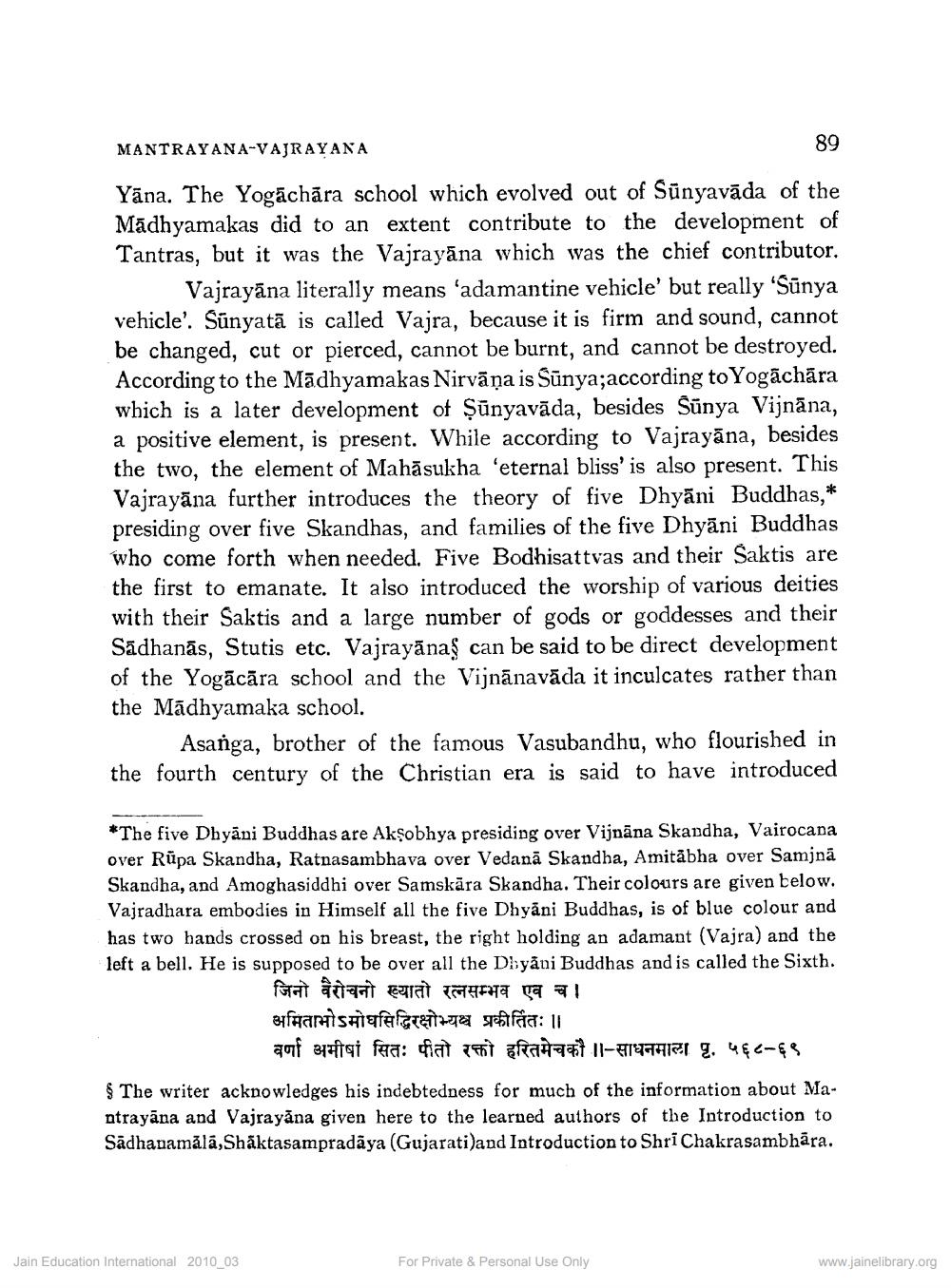________________
89
Yana. The Yogachara school which evolved out of Sunyavada of the Madhyamakas did to an extent contribute to the development of Tantras, but it was the Vajrayana which was the chief contributor.
MANTRAYANA-VAJRAYANA
Vajrayana literally means 'adamantine vehicle' but really 'Sunya vehicle'. Sünyata is called Vajra, because it is firm and sound, cannot be changed, cut or pierced, cannot be burnt, and cannot be destroyed. According to the Madhyamakas Nirvana is Sūnya;according to Yogachara which is a later development of Ṣunyavāda, besides Sünya Vijnāna, a positive element, is present. While according to Vajrayana, besides the two, the element of Mahāsukha 'eternal bliss' is also present. This Vajrayana further introduces the theory of five Dhyani Buddhas,* presiding over five Skandhas, and families of the five Dhyani Buddhas who come forth when needed. Five Bodhisattvas and their Saktis are the first to emanate. It also introduced the worship of various deities with their Saktis and a large number of gods or goddesses and their Sadhanās, Stutis etc. Vajrayana§ can be said to be direct development of the Yogacara school and the Vijnanavāda it inculcates rather than the Madhyamaka school.
Asanga, brother of the famous Vasubandhu, who flourished in the fourth century of the Christian era is said to have introduced
*The five Dhyani Buddhas are Akşobhya presiding over Vijnana Skandha, Vairocana over Rupa Skandha, Ratnasambhava over Vedana Skandha, Amitabha over Samjnä Skandha, and Amoghasiddhi over Samskära Skandha. Their colours are given below. Vajradhara embodies in Himself all the five Dhyani Buddhas, is of blue colour and has two hands crossed on his breast, the right holding an adamant (Vajra) and the left a bell. He is supposed to be over all the Dhyani Buddhas and is called the Sixth. जिनो वैरोचनो ख्यातो रत्नसम्भव एव च । अमिताभोऽमोघसिद्धिरक्षोभ्यश्च प्रकीर्तितः ॥
वर्णा अमीषां सितः पीतो रक्तो हरितमेचकौ ॥ - साधनमाला पृ. ५६८-६९
§ The writer acknowledges his indebtedness for much of the information about Mantrayana and Vajrayana given here to the learned authors of the Introduction to Sadhanamālā,Shaktasampradaya (Gujarati)and Introduction to Shri Chakrasambhāra.
Jain Education International 2010_03
For Private & Personal Use Only
www.jainelibrary.org




